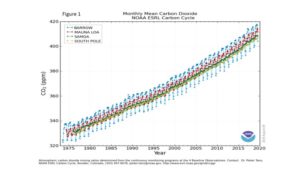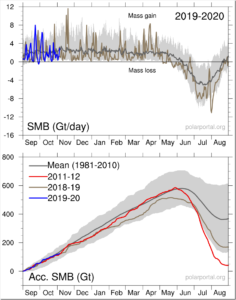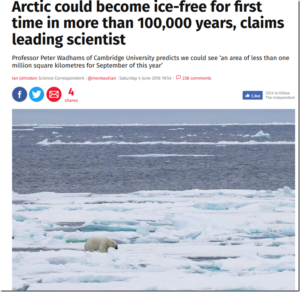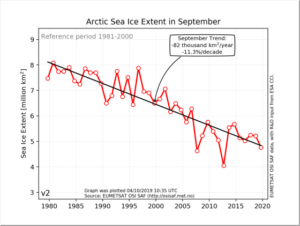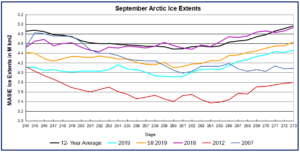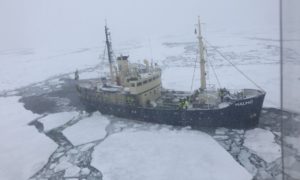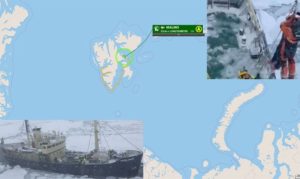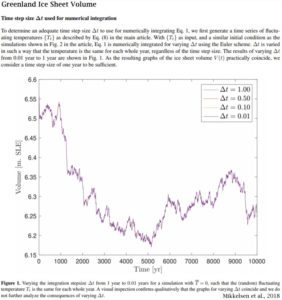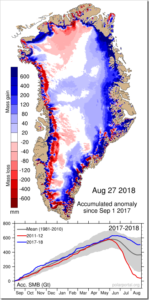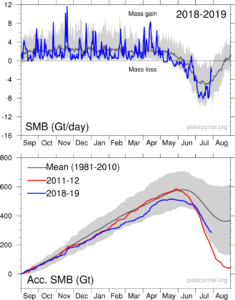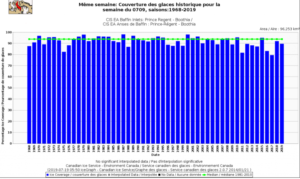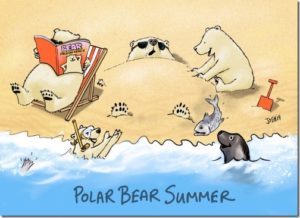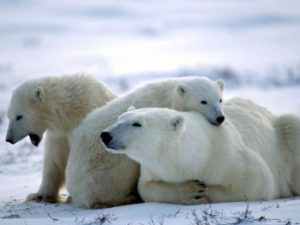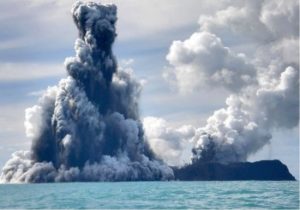by GFZ GeoForschungsZentrum Potsdam, Helmholtz Centre, October 12, 2019 in WUWT
Purple algae are making the western Greenland Ice Sheet melt faster, as the algae darken the ice surface and make it absorb more sunlight.
The ERC (European Research Council) has awarded an €11 million Euro Synergy grant called DEEP PURPLE to Liane G. Benning at the German Research Centre for Geosciences (GFZ) Potsdam, Germany, Alexandre Anesio at Aarhus University, Denmark and Martyn Tranter at University of Bristol, UK. Their common goal is to examine over the next six years (2020-2026) the role of glacier algae in progressively darkening the Greenland Ice Sheet surface in a warming climate.
The three researchers have already changed our understanding of why the ice darkens during the melt season by identifying the purple-pigmented ice algal blooms in the ice surface. These glacier algae are pigmented deep purple to shield their vital elements from the intense UV radiation in sunlight. During the melt season there are so many of these deep purple algae that they look as black as the soot from tundra fires. They form a dark band that has been progressively growing down the western side of the Greenland Ice Sheet during the summer melt season for the last 20 years, causing increased melting of the darkening ice.
Just why these glacier algae grow so densely is not really known at the moment, and neither is whether they will grow in the new melt zones on the ice sheet surface, to the north and to the ice sheet interior, as the climate continues to warm.
Project DEEP PURPLE
Questions such as this need answering if future sea level rise is to be predicted accurately, since Greenland melt is a major driver of current sea level rise.
Project DEEP PURPLE aims to answer these questions over the next six years, combining curisoity driven science about how the glacier algae grow and interact with their icy habitat, and societally relevant research into the processes that lead to ice surface darkening that are needed by ice melt modellers.
The scientists will work around many different sites in Greenland, making measurements of surface darkening, glacier algae density, how much soot and dust the algae trap on the surface and the physical properties of the melting ice surface to finally understand, how biological darkening occurs, and to predict where and when it will occur in the future.
…



